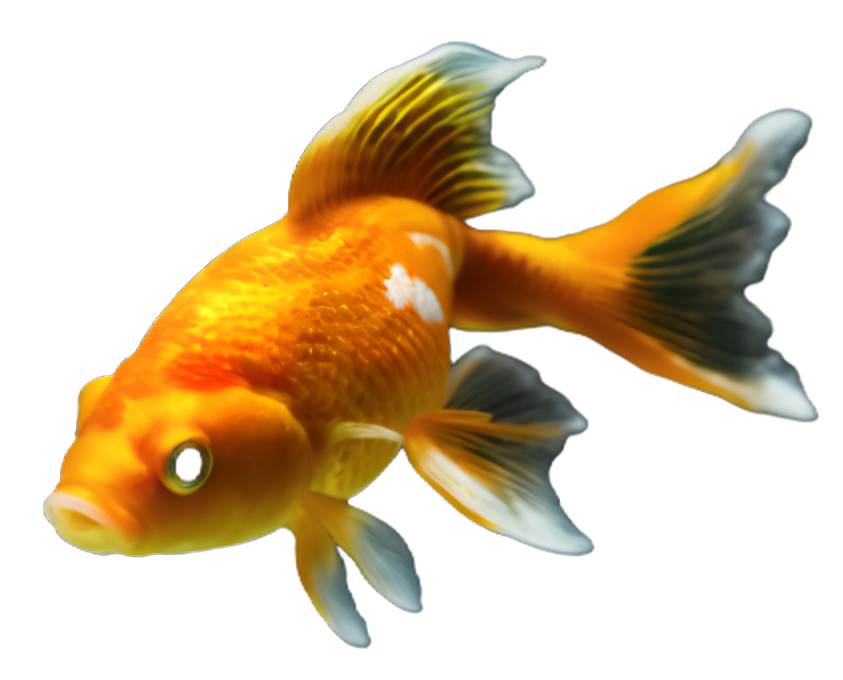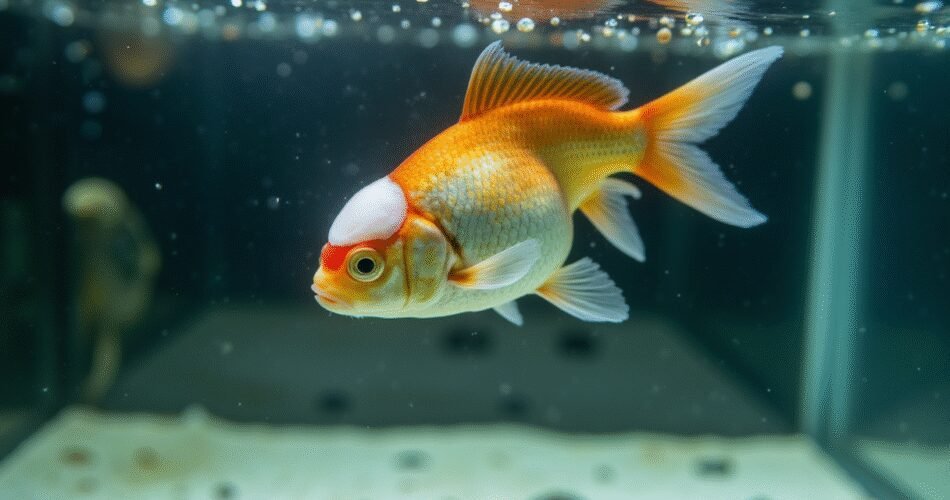I’ve been there—watching my goldfish floating upside down, and honestly, it’s terrifying. 😰 You look into the tank, and instead of seeing your fish glide gracefully, it’s struggling, tilting, or even flipping over. It might be stuck near the top or sinking awkwardly. That’s not normal behavior—it’s a clear sign something’s wrong. I know how worrying it is when your fish isn’t acting right, so let’s get straight into what this means and what you can do about it.
Understanding How Goldfish Stay Afloat
I’ve always been fascinated by how goldfish manage to stay balanced in the water. At the core of it is their swim bladder, a small gas-filled sac that acts like a built-in buoyancy control device. When it’s working properly, my goldfish can rise, sink, or hover effortlessly. But when something throws it off—like constipation, infection, or injury—that’s when goldfish buoyancy issues start. Keeping their environment stable and diet in check makes a huge difference in supporting healthy swim bladder function in goldfish.
Why Is My Goldfish Floating Upside Down?
If you’re like me, the first thing you ask is, “what causes goldfish to float upside down?” Let me break down the common reasons based on my experience.
First, swim bladder disorder is a big one. This isn’t just a minor issue—it directly affects their ability to control their position in the water.
Then there’s constipation. I’ve learned that overfeeding or giving the wrong foods can cause bloating, which puts pressure on the swim bladder and leads to floating or sinking problems.
Poor water quality is another sneaky culprit. Ammonia spikes, dirty tanks, or incorrect pH levels stress goldfish out and can trigger buoyancy problems.
Lastly, bacterial or parasitic infections can throw everything off balance. If I notice other symptoms like lethargy or sores, it’s often a sign of infection affecting their swim bladder.
These are the most common causes of goldfish floating awkwardly, and keeping an eye on them helps me act fast.
Spotting Swim Bladder Disorder
When my goldfish starts floating upside down or struggling to stay level, I know it’s time to look closer. These are classic signs of swim bladder disorder in goldfish. It’s not just about floating oddly—sometimes they list to one side or can’t control their depth at all. I diagnose it by observing changes in swimming posture, loss of appetite, or a swollen belly. I also check water quality and recent feeding habits, since things like constipation often trigger this. If it’s persistent, I consider internal infections or even physical deformities. Catching it early is key to helping them recover. 🐠
How Water Quality Affects Buoyancy
I can’t stress this enough—poor water quality has a direct impact on goldfish health, especially when it comes to buoyancy. High ammonia, nitrites, or incorrect pH levels stress them out and mess with their swim bladder. That’s why I test my water regularly and keep parameters stable. Even small imbalances can weaken their immune system and lead to disorders like floating upside down. If I see my goldfish struggling, the first thing I do is check the water. Clean, well-filtered water isn’t optional—it’s essential for preventing these issues and keeping them happy.
Fixing Diet-Related Buoyancy Issues
I’ve learned that my goldfish’s diet plays a huge role in whether they swim normally or start floating upside down. Often, it’s a diet-related buoyancy problem caused by constipation. If I overfeed or use dry, air-filled flakes, it can block their digestive tract and affect the swim bladder. To correct this, I stop feeding for a day or two to let their system clear. Then, I introduce cooked, deshelled peas—they’re a natural laxative. I also switch to sinking pellets or pre-soaked foods to prevent air ingestion. Keeping their diet simple and well-portioned helps avoid repeat issues and supports long-term goldfish health. 🥦
Home Remedies for a Floating Goldfish
When my goldfish is floating upside down, I start with home treatments before panicking. Here’s my go-to approach for treating goldfish swim bladder disorder at home.
First, I stop feeding for 24–48 hours. Fasting gives their digestive system a much-needed break. After that, I offer a cooked, de-shelled pea. It’s fibrous and can help clear any blockages causing the buoyancy problems.
I also check the water immediately. Poor quality is a common trigger, so I test parameters and do a partial water change if needed. Keeping the tank clean is one of the easiest and most effective home remedies for goldfish buoyancy issues. These steps have helped my goldfish recover time and again. Stay consistent, and you’ll often see improvement within a few days.
When to Call a Vet
I know it’s tempting to rely solely on home remedies, but sometimes you need professional help. If simple fixes like fasting or water changes don’t work within a day or two, it’s time to call a goldfish health specialist. Look for signs you need a vet—like persistent buoyancy problems, loss of appetite, labored breathing, or visible sores. These aren’t things I can handle alone. A goldfish vet care professional can diagnose underlying issues such as infections or organ problems that need targeted treatment. Don’t wait if your fish isn’t improving. Getting expert help early can literally save your goldfish’s life. 🏥
Preventing Buoyancy Problems Long-Term
Prevention is always better than cure, and I’ve built habits to avoid goldfish buoyancy issues altogether. It starts with diet—I always soak dry pellets before serving and never overfeed. Small, frequent meals work wonders. It’s one of the goldfish care best practices that keeps their swim bladder functioning properly.
I also prioritize tank cleanliness. I test water quality weekly and do regular partial changes. A clean environment reduces stress and infection risks, which directly helps prevent swim bladder problems. Good filtration and avoiding overcrowding are non-negotiables for me.
Lastly, I ensure their tank is spacious with plenty of swimming room and resting spots near the bottom. This helps my goldfish stay balanced and active. By sticking to these routines, I keep my goldfish healthy and avoid scary moments like floating upside down.
Wrapping Up: Keeping Your Goldfish Healthy
At the end of the day, ensuring a healthy goldfish life comes down to being proactive. If you’re dealing with floating upside down, it’s often linked to overfeeding, poor water, or swim bladder trouble. My summary of fixes for floating goldfish includes fasting, offering peas, and maintaining clean water. For long-term goldfish wellbeing, I stick to a balanced diet, avoid overfeeding, and keep their tank stress-free. By focusing on these steps, I’m confident in maintaining goldfish health and making sure my fish thrive for years to come. 💙

